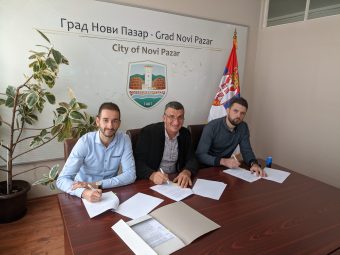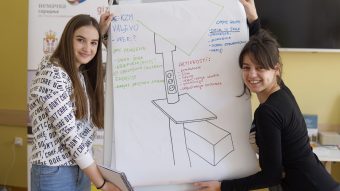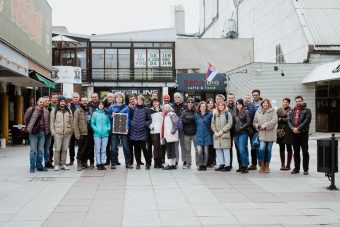
Serbia is making significant strides toward a cleaner and more efficient energy future with the support of the German government within the framework of the German Development Cooperation program.
PROMOTION OF RENEWABLE ENERGY AND ENERGY EFFICIENCY IN SERBIA is a project implemented by the Deutsche Gesellschaft für Internationale Zusammenarbeit (GIZ) GmbH in cooperation with the Serbian Ministry of Mining and Energy, which aims to develop the prosumer model further and familiarize the citizens with this new concept in the Serbian power supply system.
This initiative contributes to transforming the Serbian energy landscape and empowers citizens to actively participate in the energy transition.
The greatest contribution to energy sustainability is given when investing in a solar power plant is done after implementing energy efficiency measures. Electricity consumption and thermal energy losses should be reduced, coupled with more efficient cooling and heating systems, and only then self-production of clean energy should come into focus.
IN FOCUS:
- ELECTRIC POWER DISTRIBUTION OF SERBIA – CHALLENGES OF CONNECTING PROSUMERS TO THE POWER GRID
- FARMLAND – HOME TO SOLAR PANELS AND CROPS
- CHANGES IN THE RES SEGMENT LEAD TO A STABLE POWER SYSTEM
The prosumer model, introduced only last year, allows households, housing communities, and businesses to become clean energy producers for their consumption while maintaining the ability to use electricity from the distribution grid when “the Sun isn’t shining,” i.e., when there is no production, or it is insufficient. Also, prosumers can transfer their surplus clean energy to the grid through a two-way meter.

The decentralization and democratization of electricity generation allow citizens to contribute directly to decarbonization and environmental protection. Serbia has excellent potential for solar energy use – up to 30-40 per cent more insolation than Germany – but is far from the installed capacities that exist there. Fortunately, in the last ten years, prices of photovoltaics have dropped significantly, and the path to mass adoption of solar power plants is becoming shorter and easier, at least in terms of affordability.
Another advantage that citizens can have as prosumers is financial savings, as they can produce a significant amount of electricity for their needs and buy less from the power utility. The greatest savings are made when most of the self-produced electricity is consumed directly, during the time of day when production from the solar power plant is highest, which requires certain changes in habits. With good planning of the capacity of the rooftop solar power plant, adjusted consumption, and the subsidies for PV systems offered by the Ministry in cooperation with local self-governments, households can pay off their power plants through savings in electricity bills in less than eight years, and their lifespan is at least 25 years. With the expected increase in electricity prices, this will only be shortened further.

Households have an additional advantage – they can create “kilowatt-hour stocks” at a time when their solar power plant production is greater than their consumption, and they can hand over the excess kilowatt-hours to the distribution network, which the distribution operator records through net-metering. Prosumers can use their “stocks” by the end of the accounting period, which lasts from April of one year to the end of March of the following year. However, this practice creates pressure on the network and the supplier because surpluses are created at the time of the year when consumption in the entire system is lower, and the “stocks” are used up when consumption is the highest and electricity production is the most expensive. Hence, the sustainability of this calculation method is in question.
Although solar energy is renewable, it is also a variable source of energy. Production in the solar power plant is only possible during the day, and even then, when it is cloudy, it drops significantly. When prosumers lack enough self-produced electricity, they can get the necessary energy from the grid. But what happens when prosumers have surpluses and many of them at the same time? All surpluses of clean energy go into the grid as a priority source in the energy mix, and the power utility company then supplements this from their production in thermal and hydropower plants.
Source: GIZ
Read the story in the new issue of the Energy portal Magazine RENEWABLE ENERGY SOURCES



